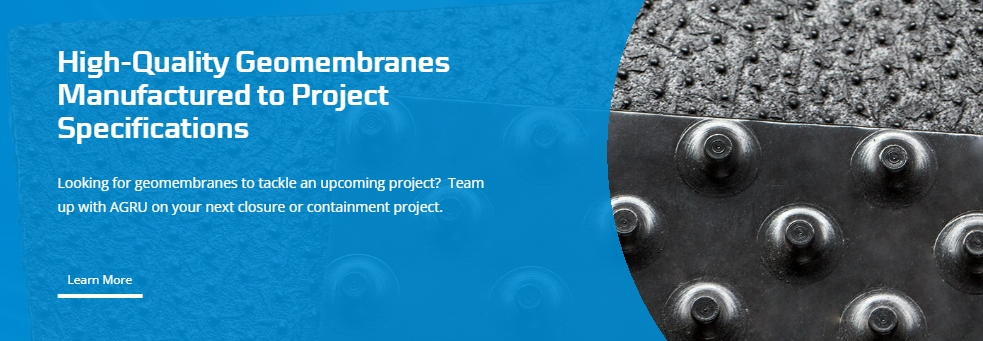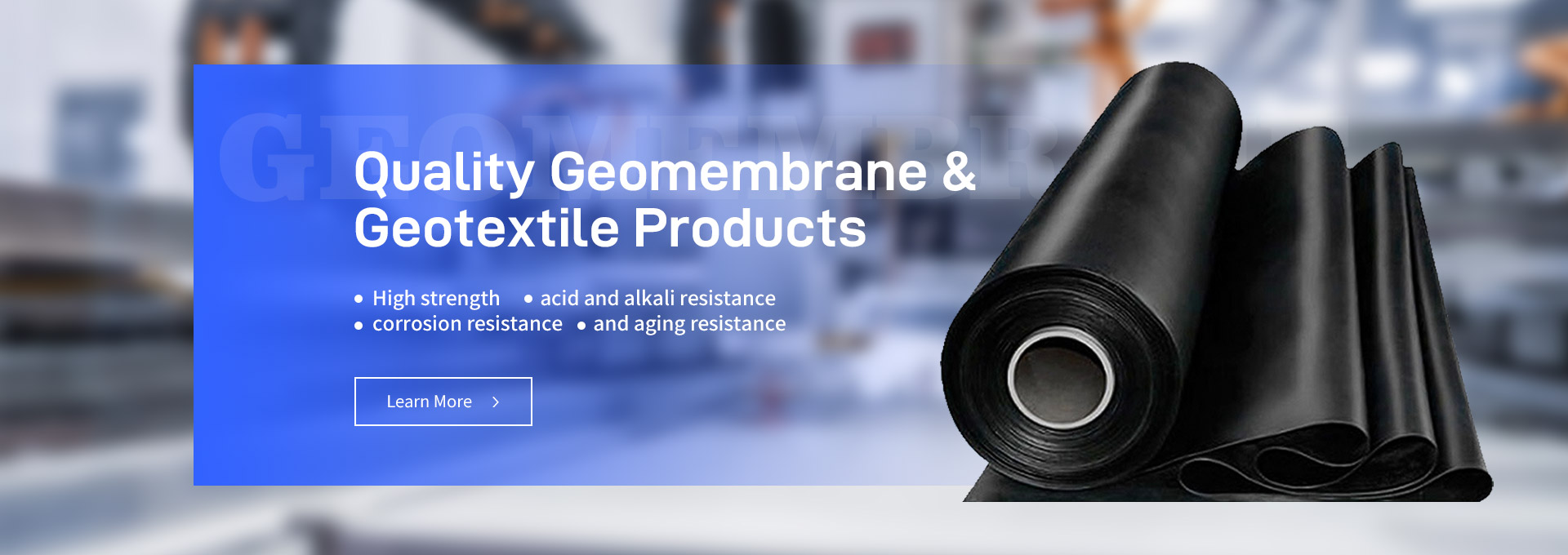What exactly are geomembranes, and why are they useful?
Polymeric geosynthetic barriers (colloquially “geomembranes”) are, by definition: factory-assembled structures of low-permeability synthetic materials in the form of a sheet, which acts as a barrier to control or mitigate fluid or gas migration into the environment. They are often used in landfills, ponds, coal refuse containment, and other applications to provide a barrier between the soil and possible contaminants (1, 2).
Geomembranes are known for their durability, flexibility, and resistance to chemicals and temperature changes, making them ideal for many environments. With the ability to prevent soil and groundwater contamination and provide a barrier against harmful vapors, geomembranes play an essential role in protecting the environment and human health.
In this guide, we will explore geomembranes, their properties, applications, and their future.
What are Geomembrane Advantages
Geomembranes are commonly made from raw polymer resins, such as high-density polyethylene (HDPE) and linear low-density polyethylene (LLDPE). They are processed into sheets of various widths and thicknesses by extrusion (1).
Geomembranes derive many of their properties from their resin. HDPE and LLDPE resins are often mixed with various additives such as antioxidants, plasticizers, fillers, carbon black, and lubricants to alter their performance under different conditions. For example, carbon black helps improve resistance against ultraviolet radiation (UV), and antioxidants help improve the material’s ability to resist chemical processes that degrade it over time (3-5).
HDPE geomembrane is one of the cheapest, most widely used geomembranes made from a blend of polyethylene resins and other additives. They are known for their high strength, low cost, and high chemical resistance, making them suitable for use in various landfills and hazardous materials containment.
While geomembranes with polyethylene (PE) possess antioxidants, these chemicals are consumed over time. Therefore, excluding all other factors, the liner’s oxidation rate determines the maximum service life of geomembranes. Oxidation refers to the loss of electrons, and the oxidation rate is determined by environmental factors such as temperature, oxygen partial pressure, and chemical composition of the surrounding media. The temperature has the most significant effect on oxidation as it affects oxygen solubility and permeability. Oxygen concentration is also critical, as it is essential in most geomembrane oxidation reactions. Finally, metallic ions such as cobalt manganese, copper, and iron in the media in contact with geomembranes can accelerate oxidation (4, 7).
In essence, the durability of a geomembrane refers to not only the physical strength of the material but also all the ways the product was created to reduce the oxidation rate. Under the right conditions, geomembranes have a half-life exceeding 400 years (8).
Cost-Effectiveness and Low Maintenance
Geomembranes come with the economic benefit of being relatively easy to install, lightweight to transport, durable under many conditions, and versatile to support various installation and project conditions. This is in stark contrast with traditional materials such as clay barriers.
For landfill closures and containment projects, direct and indirect costs should be considered when preparing an HDPE liner cost estimate. Costs include the purchase price and the cost of transporting, installing, and maintaining the liner. Liner monitoring and maintenance is one aspect that is often overlooked but is essential when calculating the liner’s total cost throughout the project’s expected lifetime. Read more about HDPE liner costs here.


